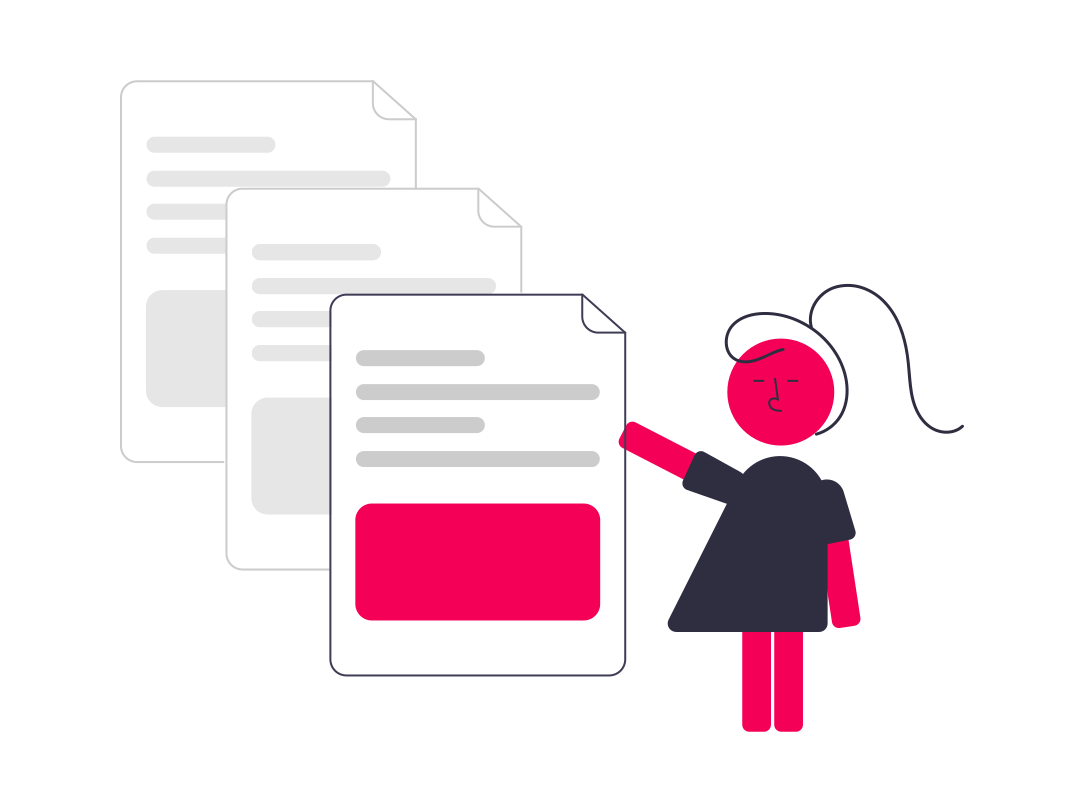
Intelligent Document Processing in Banking is both a pressing need and a growing trend. Using AI to process documents has become increasingly popular among businesses seeking greater profitability, efficiency, and accuracy. As CXOs in the banking industry strive to establish effective processes while meeting ever-changing regulations, intelligent document processing is gaining traction as a viable option offering numerous benefits. Intelligent document processing uses a combination of robotic automation (RPA) fused with artificial intelligence (AI) capabilities making it possible for banks to quickly process vast amounts of data at a low cost and accuracy levels high. This solution brief will explore intelligent document processing within banking environments and its advantages over traditional manual methods, such as improved security, cost savings, and streamlined workflow automation.
The Need for Intelligent Document Processing in Banking
Banks have long relied on manual processes, such as manual data entry and document review, for many critical operations. This is time-consuming and expensive, not to mention prone to human error. To increase efficiency, many banks are now introducing intelligent document processing (IDP), an evolution of Robotic Process Automation (RPA), which utilizes Artificial Intelligence (AI). With IDP, financial institutions can save resources by automating consistent, repeatable tasks and quickly gaining insights from unstructured documents that may contain essential data. There is also potential to use IDP in areas traditionally reserved for humans, such as fraud detection, customer onboarding, etc. As a result, IDP can help banks reduce operational costs while accelerating the entire process of collecting and managing documents.
Banks face many challenges in the digital era. One of the biggest is how to make sense of large volumes of unstructured data and documents that are continuously being generated. With Intelligent Data Processing, banks can unlock the potential opportunities hidden in vast amounts of data, helping them to remain competitive in a rapidly changing industry.
Manual data entry can be costly and prone to errors, resulting in inefficient use of resources and higher transaction costs for banks. Intelligent Data Processing helps automate this process, drastically reducing manual efforts and error rates while improving accuracy. This makes it more cost-effective for banks to process extensive data quickly and accurately.
Neo Banks have emerged with their agile service models in recent years, offering instant customer service and digital-first banking solutions. This has forced traditional banks to adopt more efficient data management methods to remain competitive. Intelligent Data Processing provides a powerful solution for banks by helping them process critical business information faster and more efficiently.
Furthermore, as customer expectations about response times and quality continue to rise in line with technological advances, banks must be able to quickly analyze customer data and offer personalized services that meet these expectations. Intelligent Data Processing helps them do this by providing quick access to actionable insights so they can respond swiftly and accurately.
How Intelligent Document Processing Works
Intelligent document processing is a powerful technology incorporating AI and machine learning to automate extracting data from scanned paper documents. For example, using AI algorithms applied to natural language recipes and automated image recognition. As a result, users can rapidly recognize diverse data types and input them directly into other software applications or systems. This simplifies tedious manual document processing tasks and makes data more accessible, allowing companies to make faster decisions, reduce errors, and increase efficiency. As a result, there is no doubt that intelligent document processing will continue to revolutionize organizational processes worldwide.
- Pre-Processing – In this step, an algorithm is applied to the input document(s) to make them easier to read by computers. This may include pre-processing tasks such as Optical Character Recognition (OCR), format conversions, noise removal, language detection, etc.
- Document Parsing and Classification – Once the pre-processing stage is complete, a semantic parser is applied to the documents to identify and extract essential information. This step might include natural language processing (NLP), recognizing different document components, and classifying them into predefined categories.
- Data Extraction – The machine learning system can extract the data from the documents after parsing. Depending on the type of data that needs to be extracted, different techniques may be used, such as text extraction algorithms, pattern recognition algorithms, entity extraction algorithms, etc.
- Domain Validation – Once all of the relevant data has been extracted from the source documents, it must be validated against a given domain or knowledge base to ensure accuracy and completeness. This step includes cross-referencing the information against internal and external sources, such as databases and other documents.
- Data Dissemination to Downstream Processes – The final step in IDP is data dissemination to downstream processes. This can include transferring the structured data into a business intelligence system, populating an analytics platform, or feeding an enterprise resource planning (ERP) system. By automating this process with IDP, businesses can reduce the human labor required for manual document processing tasks.
Intelligent Document Processing Use Cases in Banking
Invoice Processing: Intelligent Document Processing (IDP) can help streamline the process of invoice processing within an organization. Automating the data capture, classification, and validation of invoices makes it easier to ensure accuracy, improve efficiency, reduce costs, and accelerate supplier payments.
Regulatory Forms Processing: IDP can automate compliance checks on regulatory forms such as tax returns or insurance applications. Organizations can reduce manual effort by automating this process while ensuring that all submitted forms are accurate and current with current regulations.
Account Management: IDP can also be used to manage customer accounts across various financial institutions by automatically capturing and validating customer information from multiple sources. This can help organizations keep accurate records of customer accounts and ensure that all necessary information is up-to-date.
Loan Document Processing: IDP can also help streamline the process of loan document processing by automatically capturing, validating, and verifying loan documents such as application forms, supporting documents, and credit reports. This helps to improve accuracy and efficiency when handling loan applications.
Customer Profile and KYC (Know Your Customer): IDP can gather customer profiles from various sources to accurately build a complete picture of an individual’s identity and financial history. Automated processes help ensure Know Your Customer regulations compliance and provide insight into customers’ risk levels.
Contract Processing: IDP can also be used to automate the processing of contracts and agreements. Organizations can reduce manual effort by automating the data capture, validation, and analysis of contracts while ensuring accuracy and reducing costs.
Employee Onboarding: IDP can help streamline the onboarding process by automatically capturing and validating personal details such as identity documents, tax forms, background checks, etc. This helps to improve efficiency while providing organizations with a comprehensive view of an individual’s information.
Mortgage Document Processing: IDP can automate the data capture and validation of mortgage documents such as loan applications, credit reports, title searches, and more. Automation helps to reduce manual effort.
Benefits of Intelligent Document Processing for Banks
Utilizing Intelligent Document Processing (IDP) for daily banking tasks can significantly benefit financial institutions. IDP, an evolution of Robotic Process Automation, employs AI to analyze documents and data quickly and accurately, allowing banks to save time and money, improve accuracy and customer experience, and stay ahead of the competition. From automated document classification and summary to predictive analytics processes such as customer profiling or credit scoring, IDP can help banks become more agile by streamlining their processes from end to end. As an added advantage, it helps the finance industry stay compliant with ever-changing regulations to remain competitive. By implementing IDP’s capabilities, such as natural language processing (NLP), optical character recognition (OCR), and if/then logic automation, there is no doubt that banks will be able to increase operational efficiency while saving costs drastically.
Adopting an Intelligent Document Processing Solution
Adopting an intelligent document processing solution in your bank can significantly increase efficiency and save time. With AI-driven technology, automated systems can now read and interpret documents in real time, meaning employees no longer need to spend hours manually transcribing and coding data. Automation through intelligent document processing also supports better compliance and fraud prevention and helps prevent errors caused by manual data entry. In addition, intelligent document processing is pushing the boundaries of RPA solutions through its combination of Artificial Intelligence (AI) and automation to help banks process data and conduct transactions faster and with fewer errors. Explore the possibilities today for faster, smarter banking operations for you and your customers.
Challenges to Implementing IDP
Implementing intelligent document processing in the banking industry has become increasingly important to keep up with customer demands and ensure data accuracy. However, it can pose considerable challenges due to this domain’s large-scale financial and operational complexity. This requires robust workflow designs based on machine learning algorithms and efficient integration into existing systems and processes. Building a scalable system is further complicated by the diverse range of documents that need to be processed in banking environments. Furthermore, significantly higher security and compliance requirements must be addressed at every process step. Although each challenge associated with intelligent document processing presents hurdles that must be met, experienced professionals are well prepared to furnish reliable solutions for successful implementation within banks.
What To Look For When Choosing an IDP Solution?
Choosing an intelligent document processing solution for your bank may seem intimidating, but with the right tools and expertise, it need not be. First and foremost, you’ll want to evaluate the tool’s speed, accuracy, and scalability capabilities. In addition, artificial intelligence (AI) should play a key role in process automation and document analysis capabilities. Further, look for solutions offering robust security and privacy controls to keep customer data safe. Finally, ensure the solution integrates easily with existing systems while providing intuitive user experiences on web and mobile platforms. With these criteria in mind, you should have no difficulty finding a solution that fits your needs perfectly.
IDP Features and Functionality:
Here are some Features and Functionality of an Intelligent Document Processing Platform:
– Automate document ingestion with automatic sorting and classification.
– Extract data from semi-structured and unstructured documents efficiently through Natural Language Processing (NLP) technologies such as Optical Character Recognition (OCR).
– Establish quality control processes to ensure the accuracy of data extraction.
– Automatically transform extracted information into structured downstream formats or directly integrate into existing systems of record.
– Generate automated reports detailing the status and results of document processing activities.
– Build workflows for routing documents, capturing metadata, and tracking progression from one step in a process to the next.
– Enable text analytics on document content for sentiment analysis, entity extraction, summarization, and more.
– Leverage a scalable, secure, and compliant cloud infrastructure to store documents associated with any process.
– Monitor performance and audit trails of document processing activities for compliance purposes.
– Customize capabilities through APIs, SDKs, and other extensibility options.
– Provide real-time insights and analytics to monitor the effectiveness of document processing activities.
– Integrate with existing enterprise systems (e.g., ERP, CRM) for seamless data exchange.
– Deliver an intuitive self-service user experience through a simple drag & drop interface.
– Enable collaboration across stakeholders in multi-party processes.
– Streamline digital transformation initiatives by replacing manual processes with automated workflows, improving workflow velocity and reducing costs.
In conclusion, Intelligent Document Processing (IDP) is a powerful tool for banks that provides several benefits regarding accuracy, cost savings, and scalability. The technology combines the capabilities of RPA with AI to make data extraction much easier and faster than manual review processes. Banking institutions must keep pace with the rapidly changing technological landscape to remain competitive. When choosing an IDP solution, banks should look for an intuitive platform that enables customization and is secure. Successful adoption of this technology will lead to improved customer experience and satisfaction for both customers and employees in the long run. It’s time for banking institutions to embrace Intelligent Document Processing and put it at the heart of their digital transformation programs.









